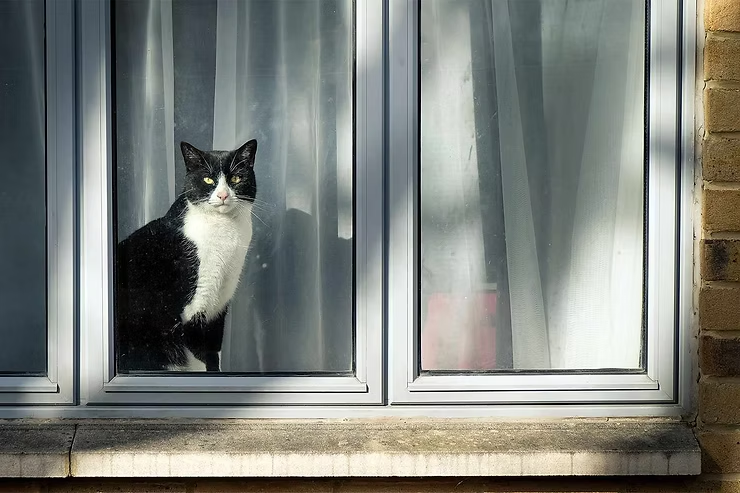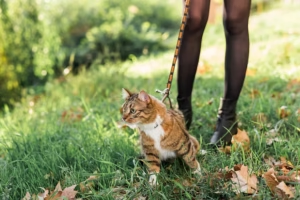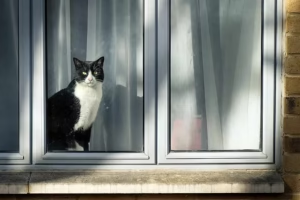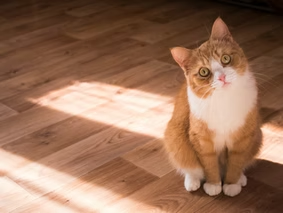If you’ve ever seen your indoor cat bolt under the bed when someone knocks on the door or curl up in the same corner during a thunderstorm, you’re not alone. Cats are known for being self-sufficient, but they still need to feel safe and grounded, especially when they’re living indoors full-time. A secure home environment does more than offer shelter. It helps cats build confidence, relax more easily, and respond better to the changes that happen around them.
Indoor cats can’t control much of their surroundings, so when their space feels chaotic or unpredictable, stress can creep in. They might act jumpier than usual, resist being touched, or simply spend the day hiding out. Every cat reacts a little differently, but these behaviors often come from the same place: a lack of safety or consistency. Building a calmer, more comforting environment isn’t hard. It just takes a few thoughtful changes and attention to what makes your cat feel more at home.
Why a Secure Environment Matters
Much like people, cats are creatures of habit. A sense of safety lets them eat, play, and sleep without constantly being on guard. When a cat feels protected, they’re more confident and adaptable and usually show fewer behavior issues. But when their home feels too loud, too unpredictable, or too empty of safe spaces, that stress builds up and often shows in their habits.
Cats under stress might start scratching furniture, using their litter box less consistently, or over-grooming to the point of irritation. These signs can be subtle at first, but over time, they suggest your cat doesn’t feel as safe as they could.
A stable and peaceful home helps indoor cats feel like they have some control. Consistent routines and cozy spaces give them more chances to play, nap, and explore in their own way. It doesn’t mean turning your home upside down. But offering a few go-to areas where they can relax without worry can make a big difference.
Take a single-cat household where guests come over regularly. Each time someone visits, the cat hides. But when a simple covered hideout was added in the corner of the living room, the cat began observing instead of running away. Small adjustments can be more meaningful than you think when they match your cat’s behavior.
Creating Safe Spaces at Home

Whether your cat stretches out in sunny spots or prefers quiet, low-light corners, every cat needs a few safe places. Cats don’t constantly look to humans like dogs often do. They check their surroundings and decide where they feel secure enough to settle. That’s why having several options around the home matters.
Here are a few ideas to help your cat feel safer:
1. Create cozy hiding spots
Soft blankets tucked into closets, behind couches, or inside small boxes create quiet zones. Covered beds or cat caves give your cat an easy escape. If you have kids or other animals, set up a few off-limits areas so your cat always has retreat options.
2. Add vertical space
Cats like height. A perch gives them a great view of the room and lets them feel safe above ground level. Try cat trees, secure wall shelves, or even clear the top of a bookshelf. Anything that gets them up and out of reach can help them feel more comfortable.
3. Set up cat-friendly windowsills
Cats love watching the outside world. Birds, squirrels, and moving branches are instant entertainment. Install solid window screens and set a padded perch or shelf beside the window. This gives your cat a daily routine built on comfort and curiosity.
Safe areas don’t all have to look the same. Some cats crave dark cubbies while others love climbing high. Take note of where your cat spends most of their quiet time. If they always nap under one bed or stretch out near a certain window, use those spots as a base to build around.
Specific Tools and Accessories
Your home doesn’t need fancy gear to give your cat a secure space. A few helpful tools scattered in the right spots can change how your cat feels day to day.
Start with scratching posts. Scratching isn’t only about the claws. It’s one way cats mark territory and release energy. Place a few sturdy scratching posts or pads where your cat already lounges. Texture and angle matter. If your cat ignores a post, try a different material (like sisal versus cardboard) or shift between vertical and flat designs.

Pheromone sprays may help in more stressful environments. These sprays copy the calming scents cats leave in places they like. Spray favorite spots or use a plug-in diffuser for around-the-clock effects. These are useful near beds, carriers, or litter box areas.
Other items to explore:
– Window perches with strong mounts for safe lounging
– Safety nets or guards so open windows don’t become hazards
– Soft tunnels or covered beds for mid-day naps
– Puzzle feeders or treat-dispensing toys for active thinking
– Toys that squeak, flutter, or roll to keep instincts flowing
Switch things up every couple of weeks to avoid boredom. If your cat only plays with crinkly toys in the morning or pounces at dusk, build your routine around that rhythm.
Watch how your cat interacts with the space. If they avoid a certain room or toy, that’s a clear sign it doesn’t provide comfort. Pay attention to what they choose and trust those patterns.

The Role of Routine in Cat Security
The rhythm of daily life means a lot to a cat. Predictability makes things feel safe. This is especially important if the household is busy or changes often. Routines help your cat know what to expect when it comes to food, rest, and attention.
Here are a few basic ways to build simple routines:
– Feeding: Serve meals at the same time each day and in the same location.
– Play: Use a favorite toy as part of the schedule, such as wand play in the morning or evening.
– Litter box: Keep it clean and in one reliable spot. Don’t move it unless absolutely needed.
– Grooming: Brush your cat in a quiet place once a week or as needed.
– Quiet time: Especially in active homes, set boundaries for quiet hours where your cat can retreat without interruption.
If change is coming, give your cat time to adjust. Don’t suddenly move dinnertime from 6 p.m. to 8 p.m. Do it in small steps. The same goes for furniture rearrangements or visits from new people or pets. Slow changes give your cat time to cope.
Your presence is part of the routine. Even if it’s only a few minutes per day of sitting together or sharing a play session, that steady interaction tells your cat they can count on you.
A More Peaceful Life for Your Indoor Cat

Every cat deserves a place where they feel protected and free to be themselves. Building that environment doesn’t require a major home overhaul. A mix of soft touches, steady practices, and good observation can go a long way.
Safety looks different for every cat. One might sprawl across a sunny windowsill while another hides in a quiet drawer. Whether they nap openly or closely guard their spot under the bed, trust what they show you.
Stay alert to changes. Is your cat hiding more than usual? Ignoring meals they used to love? Acting out through scratching or meowing? These clues often signal a disruption in security. The fix may be simple: more quiet time, a new perch by the window, or reinforcing their daily routine.
No home is perfect. But a little effort to notice what helps your cat feel comfortable offers big returns over time. The calmer they feel, the more clearly their true personality comes through.
There’s real joy in seeing a cat stretch, settle, and purr because they know they’re home. That peace is something every indoor cat—and especially those rescued or rehomed—should be able to count on.
Nurturing a secure home for your indoor cat sets the stage for a fulfilling life where they can thrive. If you’re inspired to make a bigger impact, consider supporting a feral cat sanctuary in Texas like Sydney’s Sanctuary. They are dedicated to providing safety and care, giving every cat the second chance they truly deserve.






